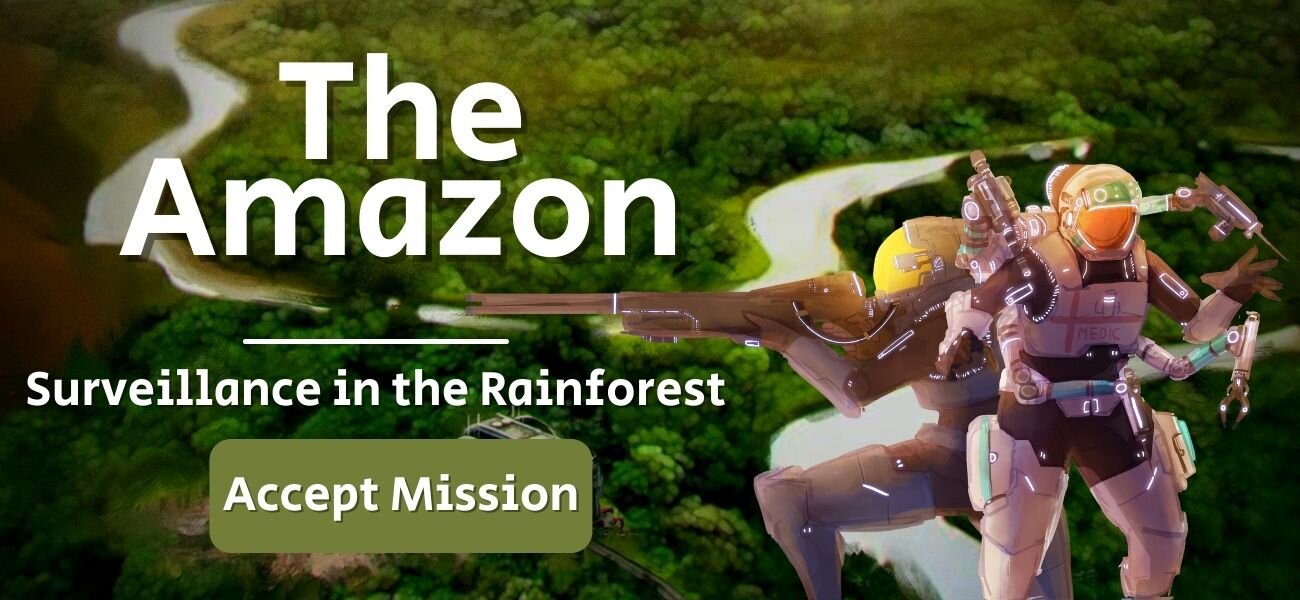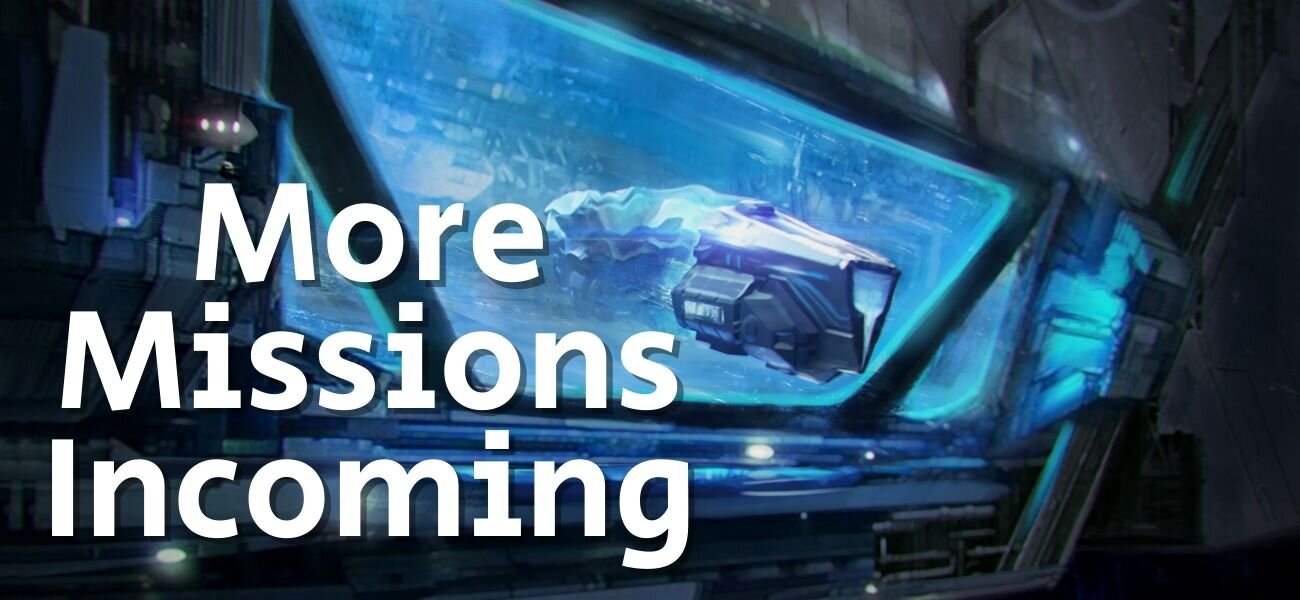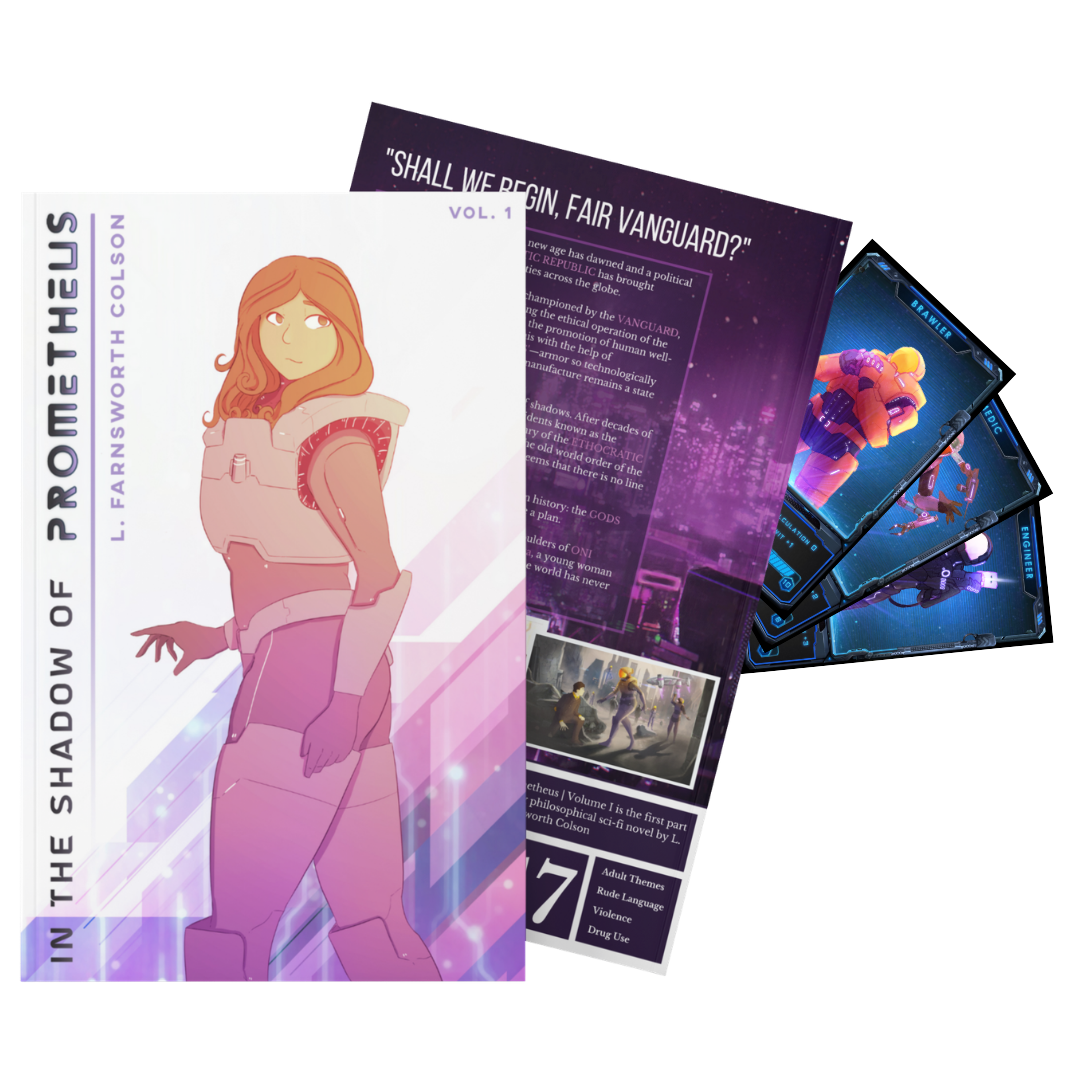
How to Play
Table of Contents
1/8 - Stats and Checks
2/8 - Difficulty Ratings
3/8 - Proficiencies
4/8 - Interacting with the Environment
5/8 - Planning Ahead and Thinking Fast
6/8 - Combatant Phase
7/8- Environment Table
8/8- Starting a Game
1/8
Stats and Checks
In Authocracy’s Prometheus 3D6 Adventures there are 4 Main Stats:
Fortitude
Governs any physical Challenge related to strength or endurance
Agility
Governs acrobatics, finesse maneuvers and stealth.
Wit
Governs quick thinking during encounters and interacting with other people
Calculation
Governs planning ahead and interacting with technology
In addition, each character has a speed rating which governs their order in encounters.
When a player decides he wants to do something in the game, the Game Master (GM) will first decide what Stat the player will roll with and then they will decide a Difficulty Rating (DR).
2/8
Difficulty Ratings
A Difficulty Rating represents how hard a given task is. In 3D6 adventures, there are six difficulties any task can have.
Menial
Roll at least a 3
Easy
Roll at least a 5
Doable
Roll at least 8
Challenging
Roll at least 11
Daunting
Roll at least 13
Unthinkable
Roll at least 16
The GM will set a rating and then the player will roll three six sided dice and add (or subtract) the corresponding Stat. If a player meets or exceeds the check, they succeed in what they are trying to do, but if they fail they are unsuccessful. If a player rolls far below what was required (E.G. they rolled a 4 on a Challenging roll, thereby being two categories below success) then the Game master may cause a penalty for their action backfiring.
In the same way if a player rolls above their requirement (I.E. rolling a 17 on a Challenging roll) the player overwhelmingly succeeded and their action might be able to have extra of heightened effects.
As the Game Master you are first and foremost responsible for setting the Difficulty of skill check, but it is important to remember that these checks are always contextual. For instance, say a player wanted to punch through a somewhat unstable concrete wall. For an average person this would be Unthinkable or perhaps not allowed to be attempted. For players equipped with a flight suit, however, this would be an easy task.
3/8
Proficiencies
In addition to Stats, classes also have Proficiencies, which represent skilled knowledge and the ability to use certain equipment. The Proficiencies are as follows:
Hacker
Allows the ability to attempt hacking
Medic
Allows use of medical supplies
Pilot
Can use a variety of civilian and military aircraft
Drone Controller
Allows the piloting of various kinds of drones
Engineer
Gives access to structural support and repair options
Demolitionist
Can make targeted explosions
Infiltrator
Allows the player, materials permitting, to disguise oneself and to pick non-electronic locks
Characters with these proficiencies will allow the group to make choices that would be otherwise unattainable.
4/8
Interacting with the Environment
When a player is trying to do something the GM must decide how difficult that task is with a difficulty rating. Tasks that are Menial or Easy should only be rolled for if the stakes of the situation are high. For example, it would be Easy for a person in a Flight Suit to punch through a concrete wall, but if the demolition needs to be timed precisely, a GM may require a roll.
For any action The GM will give it a Difficulty Rating If a player meets the DR, they accomplish what they set out to do. The GM may use their discretion to give extra bonuses if the roll succeeded by more than one category. If the roll does not meet the DR, then it is also at the GM’s discretion to impose penalties or worse outcomes based on the size of the failure.
5/8
Planning ahead and Thinking Fast
When a group is out of an encounter, you can plan ahead by rolling with Calculation to try to make a plan. This can be anything from planting explosives to change the environment, to trying to coordinate a simultaneous strike on several targets, to making a distraction.
As with all other things the GM will give the plan a Difficulty Rating representing how difficult it would be to execute the plan. If the DR for the plan is met the plan has the desired effect. If the player rolls 1 or more categories above the DR then all team members gain +1 to any rolls related to the plan. If the player rolls below the DR, the GM may choose to impose a penalty of -1 to the player and/or the group or else make some other complication in the scenario.
When a player is in an encounter, they can roll with Wit as their action to think fast and try to gain an advantage. This can be anything from: Identifying a weak point on an enemy, Identifying the trajectory on rocks or munitions, or discerning the best angle to deflect an object.
The GM will give a Difficulty Rating to the action representing how difficult it would be to discern the intended information. If the DR is met, the player gains +2 when acting on the information. If it succeeded by more than one category then all players get +2 when acting on the information. If the DR is not met, then the player wastes their turn and gains no advantages.
Players will face two kinds of active dangers, combatants and the environment table.
6/8
The Combatant Phase
Order
In the Combatant phase the order is determined by the speed of each character, the higher speed goes first, with ties being settled by agility and then an unmodified 1d6 roll if necessary.
Movement
When moving outdoors in open terrain a player may move up to 30 feet in a turn
When moving indoors, or in a constricted environment, a player may move up to 20 feet in a turn
When flying a a flight suit in open air a player can move 60 feet in a turn
Actions
An action is something that can be attempted in roughly 3-8 seconds. During a player’s turn they may take one action such as:
• Attacking
• Attempting to Gain an Advantage (Wit Roll)
• Using one of their Proficiencies
• Interacting with an environment card
Other actions may be attempted at the GM’s discretion.
Attacking
All attacks have a base difficulty of Doable. This check can be made easier or more difficult (at the discretion of the Game Master) for a number of reasons such as: cover, the target moving (or flying) very quickly, or being suppressed by other attackers.
A player can dual wield 2 Light Weapons. While doing so all attacks are a difficulty rating higher, and the attack rolls must be rolled independently for each weapon.
If a player rolls two categories above their DR than the attack is a Critical and they may choose one extra effect.
• They gain an advantage (+1 on continued attacks against that target)
• They give an advantage to another player (give +1 to attack that target to another player)
• They ignore 1 armor on the attack
• They cut off an escape route or stop their opponent’s advance for one round.
Damage
When a character is hit with an attack or otherwise takes damage, the damage is first filtered through armor, and then - if there is any excess - it is applied to the character’s health as so:
Character A has 2 armor and 2 health, they take 2 damage and are left with 2 health.
Character B has 1 armor and 2 health, they take 2 damage and are left with 1 health.
Character C has 2 Health, they take two damage and are killed.
7/8
The Environment Table
The Environment table - and how it is activated - will vary from mission to mission. Each mission will have 6 different environmental effects, numbered 1 through 6, and when the environmental table is triggered, the GM will roll a 6 sided dice and activate the effect accordingly. There are 3 main kinds of environment effects: Dangers, Opportunities, and Timers.
A Danger adds a complication to the mission. Dangers can be things such as additional combattants entering a fight, an unexpected explosion, an enemy taking a hostage, or an alarm being triggered. These cards will always add complications to the mission. When a danger card is revealed it will describe the danger, what might diffuse it, and the cost for not diffusing it. A player can take their turn to attempt to diffuse a danger card if they have the means to meet the diffuse condition.
Opportunities are short windows of time that only exist until the environment table is activated again. These are often neutral or mixed and can include things like: inclement weather, a guard shift change, or a sleeping enemy.
Timers represent a predictable event. When a timer is activated, it will have a number which represents how soon it will activate. If the effect has a timer of 2, then once the environment table has been triggered two more times, the event will resolve (after the environmental effect that was just activated). Timers will have the same descriptors as a danger card, and may sometimes include a way to add time to the timer.
Additionally, some missions have an Overarching Danger. These dangers represent a danger inherent to the scenario that is directly tied to the status of the mission. These dangers are revealed near the beginning of the scenario and persist through the entire scenario.
Most environmental effects will only be able to be activated once or twice a mission, but some effects may happen any number of times. The number of times an effect can be triggered is noted in the description of the event. If an environmental effect has exhausted its ability to be rolled, then the GM will re-roll on the table until a valid environmental effect is selected.
If you are in combat and an environmental effect is activated, it will count as being the last entity to act in the combat order.
8/8
Starting A Game
When starting a mission, the Game Master will read the mission briefing out to the group, giving them some idea of what they are heading into and what challenges they might face.
Once the briefing has been read, Players must choose their operator card and equipment. Each team can have only one operator of each class in a squad. After classes have been chosen, players choose equipment. All vanguards have flight suits (unless the mission explicitly states otherwise) and can choose one heavy weapon or two light weapons. Additionally, classes with proficiencies may also choose a kit that matches a proficiency they have (explosive kit, medical kit, ect.).
Once players have their operator cards and equipment, the Game master will read what happens when the party arrives at their location and the game will begin!

MIssion Departure
This is the Mission Departure bay. Simply select your mission and begin.

Join the Fight
Get started in the world of Prometheus with In the Shadow of Prometheus | Volume I, OUT NOW!
Science Fantasy
Science and Sorcery? You bet! In the Shadow of Prometheus features interventions by enigmatic figures called 'Elysians', avatars of a primordial force which permeates all of the known universe.
LAvishly Illustrated
Featuring over 100 illustrations by two of Authocracy’s talented artists, Ben Mills and Brandon Ellis, In the Shadow of Prometheus | Volume I picks you up and won’t let go.
RPG Supplements
We create in-universe roleplaying supplements for each of our core properties, so, when you've finished the story and find yourself wanting more: we invite you to immerse yourself even further!







